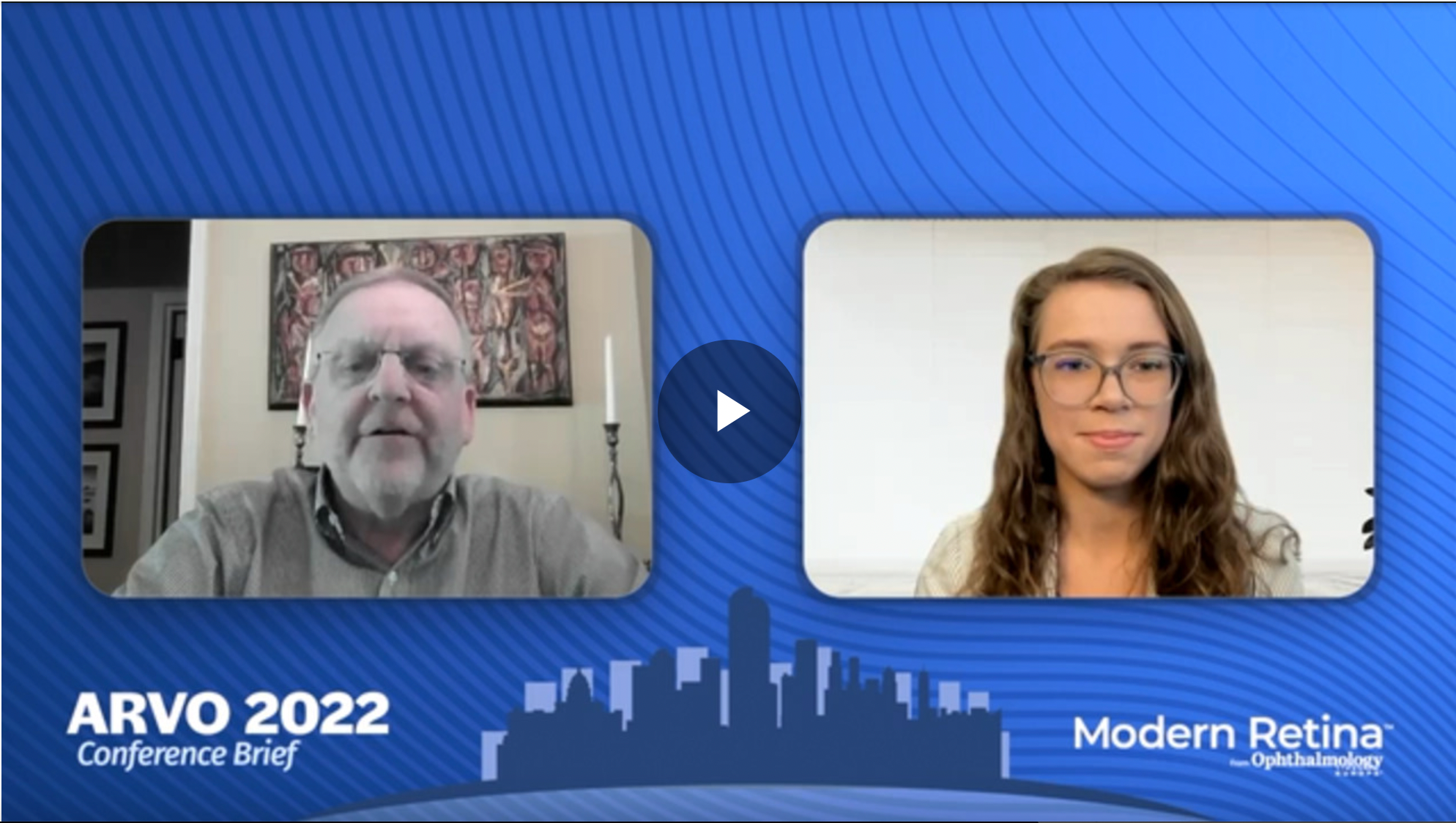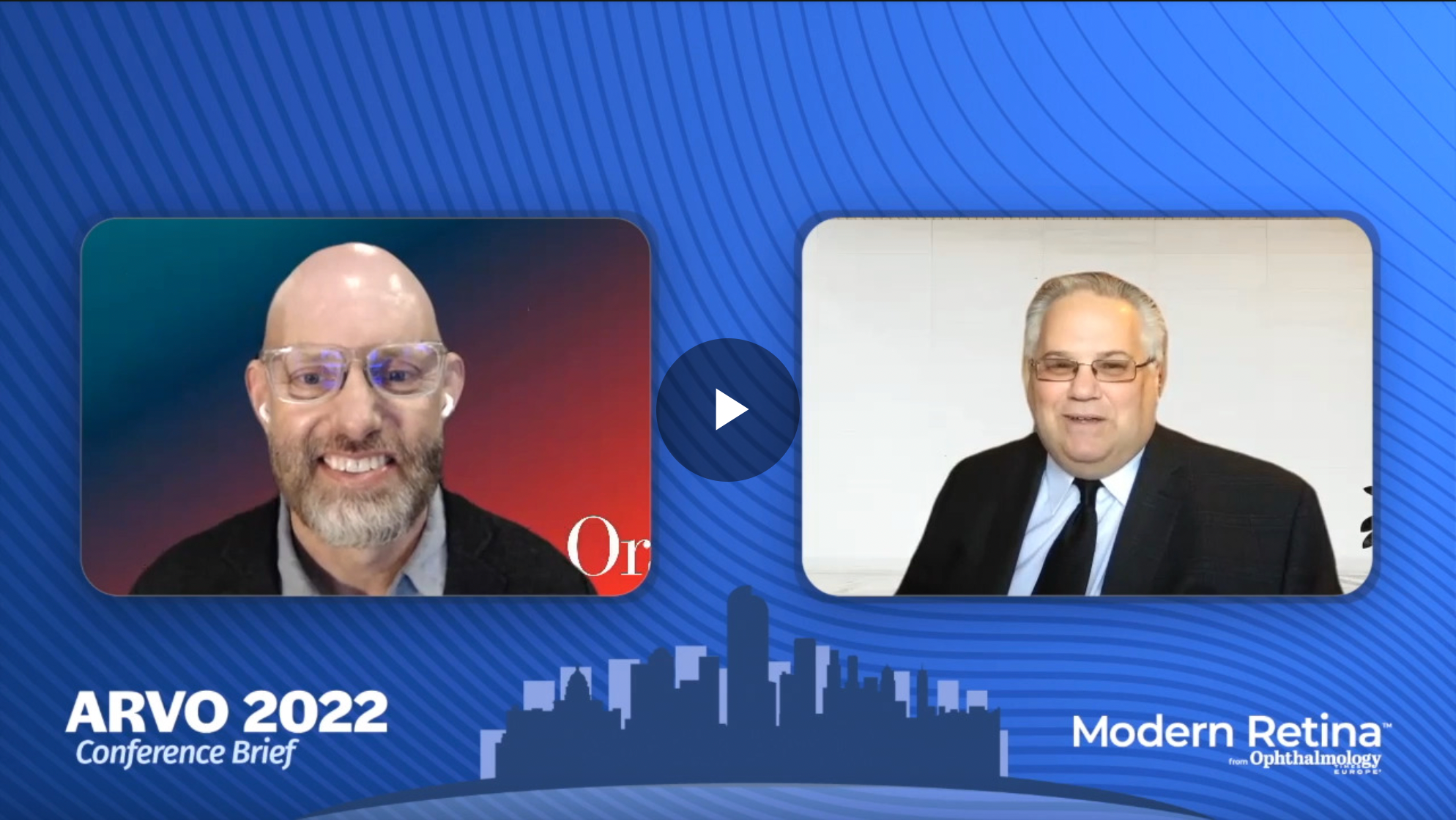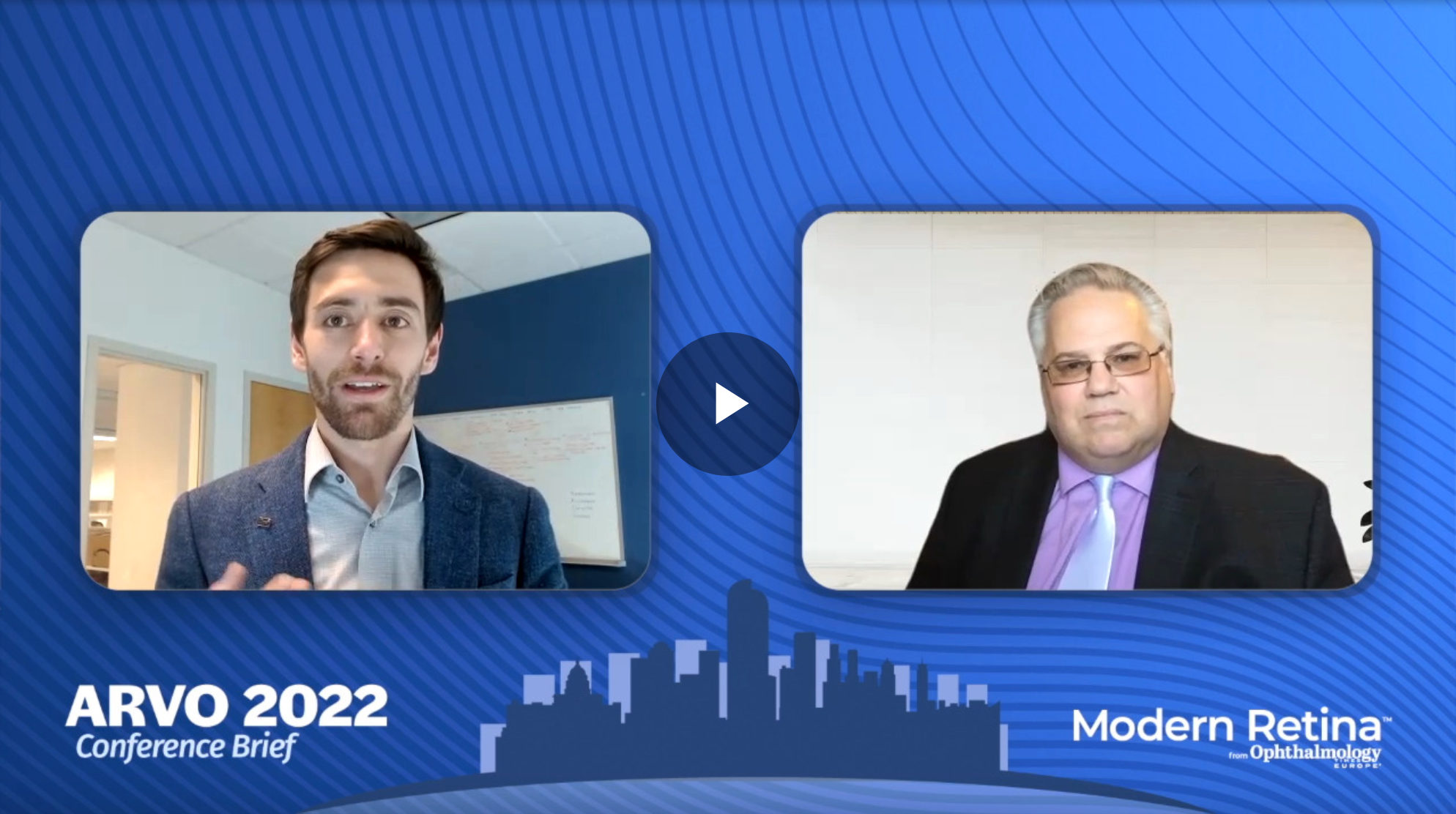ARVO 2022 recap: A review of data and innovation at the annual meeting
The Association for Research in Vision and Ophthalmology’s 2022 annual meeting in Denver, Colorado, revealed a variety of advancements in technology, pivotal trials and clinical trial design.

The Association for Research in Vision and Ophthalmology (ARVO) 2022 annual meeting took place in Denver, Colorado, on May 1-5. At the conference, presenters revealed a variety of advancements in technology, pivotal trials and clinical trial design.
ARVO 2022 review
Diabetic eye disease
Jennifer I. Lim, MD, FARVO, FASRS, reviews her ARVO 2022 presentation, “Efficacy, durability, and safety of faricimab in diabetic macular edema: 2-year results from the phase 3 YOSEMITE and RHINE trials.” YOSEMITE and RHINE trials had previously shown noninferiority between faricimab and aflibercept for the treatment of diabetic macular edema (DME), and the 2-year results showed that up to 60% of patients could be dosed with faricimab every 16 weeks and 70% of patients could be dosed every 12 weeks following 4 loading doses.
THR-687 protects diabetic rats from macular edema hallmarks
Tine Van Bergen, PhD, reported the preclinical data from a study of THR-687 (Oxurion NV), a selective RGD integrin antagonist, for treating diabetic macular edema (DME). The results showed that THR-687 provides protection against retinal vascular permeability, inflammation, and reactive gliosis in a diabetic rat model. Dr. Van Bergen is a senior scientist with Oxurion NV.
RGD-binding integrins modulate numerous biological processes including cell differentiation, adhesion, shape, migration, motility, invasion, proliferation, and survival. Under pathological conditions, integrins may be aberrantly activated. In the eye, integrins have been shown to play an important role vascular leakage, inflammation, angiogenesis, and gliosis. Consequently, integrins have emerged as promising targets for therapeutics development.
AMD
High drug levels delivered to retinal tissue via axitinib intravitreal implant for wet AMD
Erica Kahn and colleagues from Ocular Therapeutix Inc. found both that injection of the axitinib intravitreal implant (OTX-TKI) in non-human primates resulted in high levels of the drug in the retinal tissue and was generally well tolerated.
This intravitreal implant is being evaluated to treat wet age-related macular degeneration in a phase 1b clinical trial.
Long-term effects of anti-VEGF injections on renal function examined in study
Daniel Choi, MD, and colleagues from the University of Pennsylvania, Philadelphia, investigated the effect of anti-vascular endothelial growth factor (VEGF) therapies in patients over the long term and overall found no association between the treatments and the risk of chronic kidney disease or end-stage renal disease.
They commented that while intravitreal anti-VEGF can reduce plasma-free-VEGF, the literature contains little information on the safety of long-term intravitreal anti-VEGF injections on the body and especially the kidney.
In this study, the investigators used a commercial and Medicare Advantage medical claims database to identify patients who had been treated with an intravitreal anti-VEGF agent and the numbers of injections administered over 4 years after the initial injection. The patients who met the inclusion criteria were divided into quartiles based on the number of injections they received and the highest and lowest quartiles were compared.
Clinical trials
Jason S. Slakter, MD, discusses his ARVO 2022 presentation, “Efficacy and Safety of OPT-302 in Combination with Ranibizumab for Polypoidal Choroidal Vasculopathy.” OPT-302 (Opthea Limited) 2 mg combination therapy results indicated a safety profile consistent with the standard of care anti-VEGF-A monotherapy, but also indicated superior improvements in best-corrected visual acuity (BCVA) and anatomic improvements compared to monthly ranibizumab (Lucentis®) monotherapy in patients with polypoidal choroidal vasculopathy (PCV).
Decreasing risk of ocular surface damage by taping masks to skin during the COVID-19 pandemic
Yuichi Hori, MD, PhD, and colleagues found that taping the top border of a surgical mask to a clinicians’ skin reduces the potential for ocular surface damage resulting from expirations of air reaching the ocular surface during the COVID-19 pandemic.
A discourse in clinical study timelines and the need for acceleration in retina research
Dr. David Bingaman of Ora Clinical discusses today’s need to accelerate clinical studies and increase investments in retina and challenging disease states.
New prognostic test emerges as strong predictor of metastasis of uveal melanoma
Christina Herrspiegel, MD, and colleagues from the Karolinska Institutet and St. Erik Eye Hospital, Stockholm, Sweden, reported that they have developed a prognostic test, referred to as serUM, that they believe is a strong predictor of metastasis of uveal melanoma.
The test is based on serum obtained from peripheral blood samples at the time of diagnosis of uveal melanoma in 83 patients (52% women; mean age at diagnosed, 65 years) from 1996 to 2000 at St. Erik Eye Hospital, they explained. All patients were diagnosed with primary melanoma in the choroid or ciliary body.
The investigators performed both proteome profiling of 84 different cancer-related proteins to screen for potential biomarkers and an enzyme-linked immunosorbent assay to evaluate the serum levels of the best protein candidates. Receiver operating characteristics were used to define thresholds for metastatic risk, they explained.
From COVID delays to staff shortages: How to face the challenges of clinical research
Mike Watson, Vice President of OraNet, unpacks some of the most pressing challenges to clinical research in today’s climate.
A team of investigators from the New York University Grossman School of Medicine found in a murine model of experimental glaucoma that chronic IOP elevation had a role in the widespread vascular and functional brain changes seen in the animals, according to a presentation
Kevin Chan, PhD, an assistant professor at the New York University Grossman School of Medicine, presented the study results at the Association for Research in Vision and Ophthalmology’s 2022 annual meeting in Denver, Colorado, on behalf of Russell Chan, PhD, also affiliated with the school.
They hypothesized that the vascular functions of the visual cortex and basal forebrain are involved in glaucoma, because the former has lower choline levels in glaucoma and the latter has cholinergic projections to the visual cortex for modulating the cerebral blood flow and visual processing, they explained.
Myopia
A team of investigators studied the effects of intensive outdoor activity on the eyes of children and found that the choroidal and central corneal thicknesses increased over a very short period of time following intensive outdoor activity.
Mamoru Ogawa, MD, from the Department of Ophthalmology, and the Laboratory of Photobiology, Keio University School of Medicine, Tokyo, presented the results in a poster at the Association for Research in Vision and Ophthalmology’s 2022 annual meeting in Denver.
“This is an important finding considering the rapidly increasing prevalence of myopia that has been recognized worldwide,” investigators noted.
Study examines relationship between dry eye disease and high myopia in teenagers
In a poster, Osama Ibrahim Hirayama, MD, and colleagues offered results that demonstrating that anisometropia and astigmatic error were greater among the patients with high myopia compared with the other groups. Compared with the subjects with no myopia, those with high myopia reported significantly more dryness, less photophobia, and less pain.
Myopia control: Investigating spectacle lenses and their effect on axial length in pilot study
A team of Spanish investigators, led by Eva Chamorro, PhD, MSc, director of clinical research, and colleagues from Indizen Optical Technologies SL, Madrid, are studying the effects of different spectacle lenses that add different levels of defocus to the peripheral retina to control myopia.
In a poster presented at the Association for Research in Vision and Ophthalmology’s 2022 annual meeting in Denver, the investigators noted that the axial length (AL) changes over the course of a day (diurnal rhythms) with imposed defocus. This suggested, they pointed out, that these short-term changes in the AL might predict the efficacy of treatments to control myopia.
Newsletter
Keep your retina practice on the forefront—subscribe for expert analysis and emerging trends in retinal disease management.



